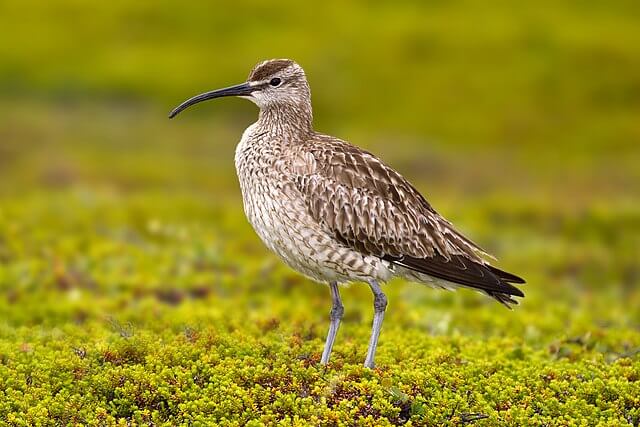
Should mass culls of foxes and crows be organised across the UK to halt the steep decline in curlew numbers? That is the controversial question being raised by some bird conservation groups.
The curlew — one of Britain’s most distinctive and much-loved wading birds, known for its long, curved bill and haunting call — has seen its population fall by 60% over the past 25 years. It is one of several ground-nesting species in sharp decline; research shows that ground-nesting birds are 86% more likely to experience population loss than those adopting other nesting strategies.
The causes are complex. Modern farming practices, including the use of heavy machinery to cut grass for silage, play a significant role — the equipment often destroys eggs and chicks hidden in fields.
At the same time, human management of the countryside has led to population surges in foxes, crows and other so-called “mesopredators”, which threaten the survival of ground-nesting birds.
Over the centuries, larger predators such as eagles, lynx and wolves — which would naturally have kept fox and crow numbers in check — have been hunted to extinction or near-extinction in the UK. Intensive farming has also left abundant food sources for these mid-sized predators, from crop waste to animal carcasses, as well as the tens of millions of released pheasants that provide easy prey each year.
These predators are known to raid nests for eggs and chicks, leading some conservationists to call for targeted culls. Mary Colwell, conservationist, writer and founder of the charity Curlew Action, has long campaigned to protect the species. Although personally opposed to shooting foxes, she argues that “a serious conversation” is needed about whether culling could play a role in curlew recovery.
“Curlew chicks and eggs are incredibly vulnerable to the activities that we do on the ground,” she told the Groundswell farming conference earlier this summer. “So when I say curlews have declined by 60% in 25 years, it’s not that the adults are dying. Adults survive really, really well; it’s that they cannot get enough eggs and chicks away to replace the population.”
Colwell says a growing number of conservationists now believe that some level of predator control may be unavoidable.
“In the UK we have huge numbers of what’s called mesopredators. Every single one of those creatures is an absolutely wonderful bit of Britain’s natural history in its own right. But there are so many now, and the decline of ground-nesting birds is so severe, that the two are coming together to create a catastrophe for ground-nesting creatures. There is a huge agreement on how to protect red-listed birds like curlews, and predator control is absolutely central to that.
“I couldn’t do it. I can’t lift a gun and shoot a fox. But I know it needs to be done if we want curlews, and that’s the societal question.”
Others, however, strongly disagree.
Dr Ruth Tingay, co-director of the campaign group Wild Justice, said: “Lethal control of some generalist predatory species will not solve the long-term issue of their over-abundance, which is a direct result of the mismanagement of our countryside.
“The three main long-term issues that need to be addressed include intensive agriculture, where silage-making increases feeding opportunities for carrion crows and reduces the breeding success of curlews; the annual release of up to 60 million non-native pheasants and red-legged partridges, which sustain artificially-high numbers of predators and scavengers; and the illegal killing of birds of prey, including species such as goshawks, which would otherwise limit the populations of mesopredators and scavengers”.
Tingay accepted that in the short-term “there may be justification for targeted and limited predator control for specific nature conservation purposes”, but this should be done “only as a last resort and only where robust scientific evidence shows there to be a need”.
The Royal Society for the Protection of Birds (RSPB) maintains that culling should only ever be considered as a last resort.
A spokesperson said: “Lethal predator control should always be used as a last resort when other methods have failed. However, non-lethal methods are not always practical or effective and sometimes predator control can be carried out to give populations of ground-nesting birds a lifeline while the main causes of their decline, such as habitat loss, are addressed.”
Colwell poses the difficult ethical question: can we bring ourselves to kill one species in order to save another?
“It’s not a nature decision, because there’s nothing natural about this country at all. Everything is managed. So yes, if we want these ground-nesting birds, we need a damn sight more predator control than we do at the moment. Are we prepared to do it? And are the NGOs prepared to look their membership in the eye and say, this is what needs to be done? Let’s wait to see. I think there’s been a change, but it’s for all of us to decide, if that’s the price we want to pay.”
——————————————————————————
At Natural World Fund, we are passionate about restoring habitats in the UK to halt the decline in our wildlife.

